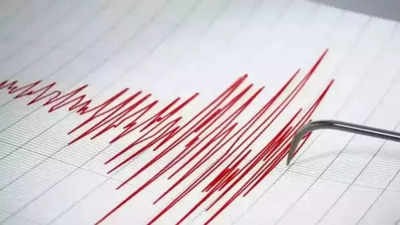
An earthquake with a magnitude of 4.4 was recorded in the Andaman Sea, with its epicenter at a depth of 75 kilometers. Despite the strength, no damage or casualties have been reported. This event follows a recent 4.8 magnitude earthquake in the Bay of Bengal. In another part of the world, Tajikistan also experienced a moderate quake measuring 4.3 on the Richter scale. These occurrences have raised questions about earthquake activity and its underlying causes.
EQ of M: 4.4, On: 26/03/2025 05:21:37 IST, Lat: 7.50 N, Long: 94.16 E, Depth: 75 Km, Location: Andaman Sea.
— National Center for Seismology (@NCS_Earthquake) March 26, 2025
For more information Download the BhooKamp App https://t.co/5gCOtjdtw0 @DrJitendraSingh @OfficeOfDrJS @Ravi_MoES @Dr_Mishra1966 @ndmaindia pic.twitter.com/cC5rqDb4jU
EQ of M: 4.3, On: 26/03/2025 07:55:07 IST, Lat: 37.04 N, Long: 71.83 E, Depth: 110 Km, Location: Tajikistan.
— National Center for Seismology (@NCS_Earthquake) March 26, 2025
For more information Download the BhooKamp App https://t.co/5gCOtjdtw0 @DrJitendraSingh @OfficeOfDrJS @Ravi_MoES @Dr_Mishra1966 @ndmaindia pic.twitter.com/MKrvKR0cu4
Earthquakes are natural events caused by stress and movement within the Earth’s crust, particularly due to the shifting of tectonic plates. In India, the Himalayan region is especially vulnerable because of the ongoing collision between the Indian and Eurasian plates. States like Uttarakhand, Himachal Pradesh, Jammu and Kashmir, and regions in Northeast India are most prone to seismic activity. As tectonic plates move, collide, or shift, energy builds up. Minor earthquakes help release this energy gradually, but if the stress accumulates, it can result in a major quake.
The Richter scale is used to measure the intensity of earthquakes. A magnitude of 0 to 1.9 can only be detected by instruments, while 2 to 2.9 causes negligible movement. At magnitudes of 3 to 3.9, tremors may feel like a heavy vehicle passing. A quake between 4 and 4.9 can cause light objects to fall. Magnitudes from 5 to 5.9 may shift heavy furniture, while those between 6 and 6.9 can crack building foundations. Earthquakes measuring 7 to 7.9 can lead to the collapse of structures. Any quake above 8 can trigger tsunamis and large-scale devastation, and a 9 or above is categorized as a severe natural disaster with intense ground shaking.
Read More: World Bank Approves 700 Million Dollars for Pakistan to Boost Economic Stability and Public Services

 Share
Share



